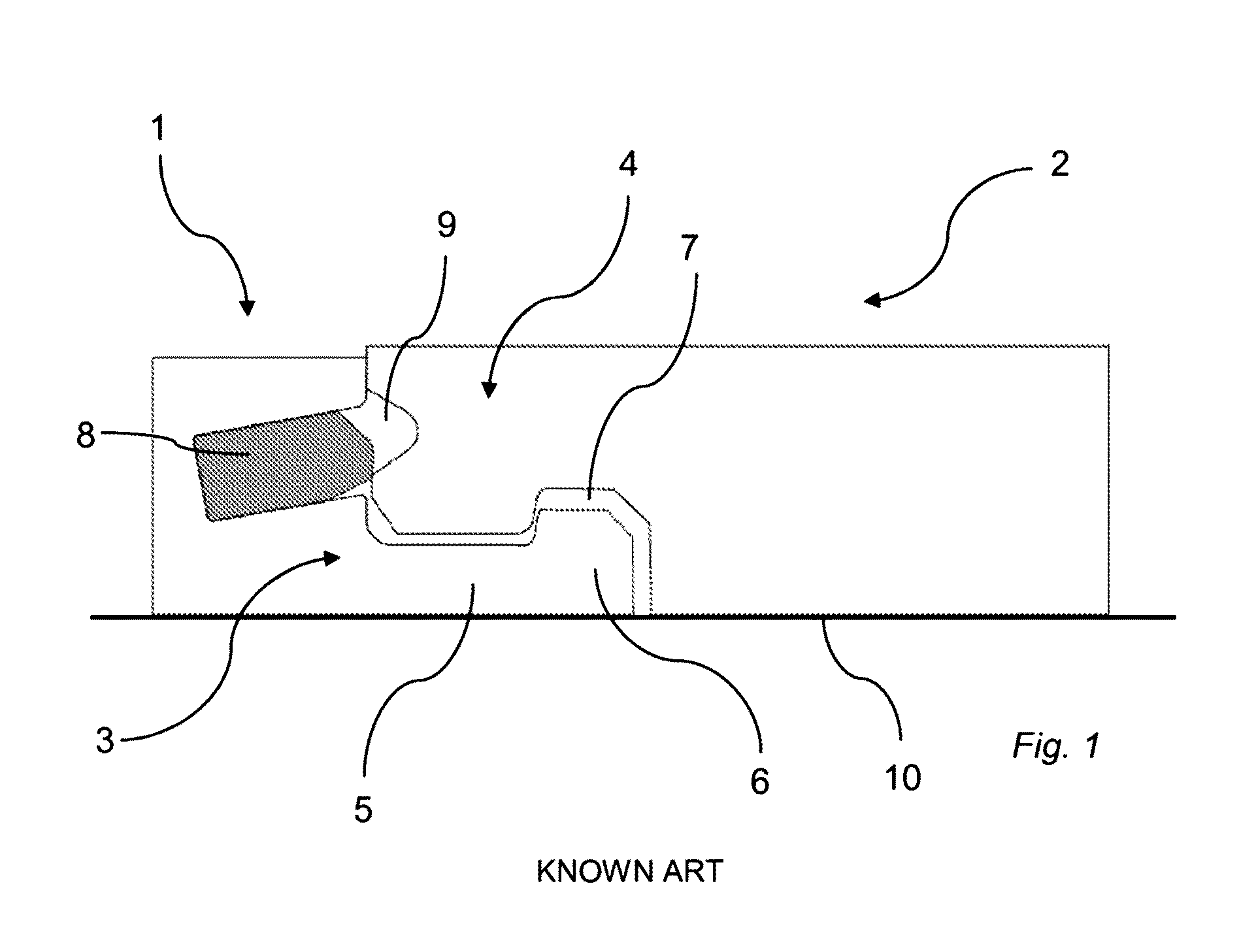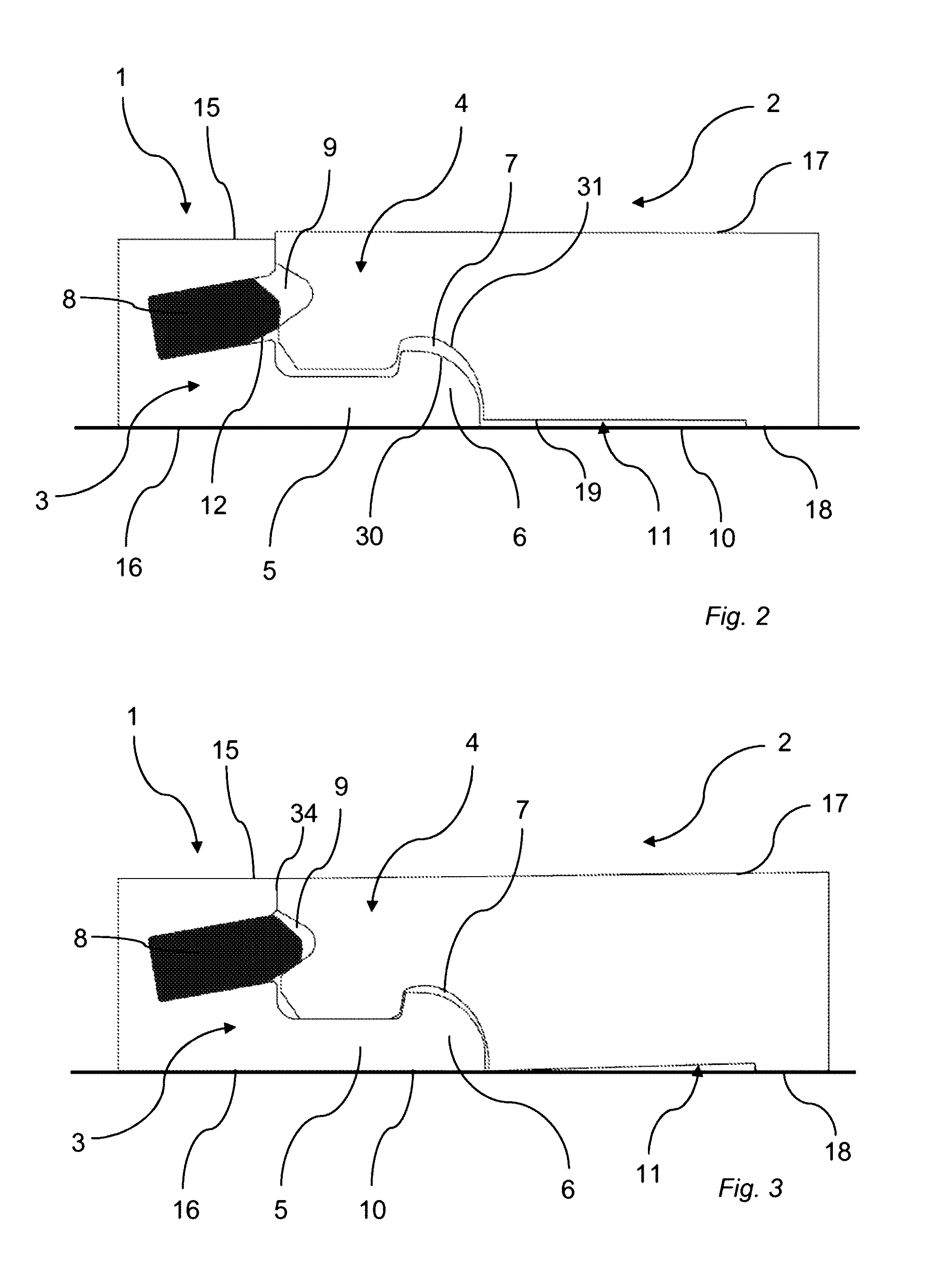Floorboards provided with a mechanical locking system
a technology of mechanical locking system and floorboard, which is applied in the direction of flooring, covering/lining, construction, etc., can solve the problems of difficulty in locking the floorboard, difficulty in joining the floorboard, and difficulty in locking the mechanical locking system such as the tongue and the tongue groove, so as to facilitate the locking of the floorboard
- Summary
- Abstract
- Description
- Claims
- Application Information
AI Technical Summary
Benefits of technology
Problems solved by technology
Method used
Image
Examples
Embodiment Construction
[0048]FIGS. 2, 3, 4 and 5 show a mechanical locking system of a set of floorboards comprising at least a first floorboard 1 and a second floorboard 2. FIGS. 6a and 6b show the first floorboard 1 and the second floorboard 2, respectively. The first and second floorboards 1, 2 are arranged on a sub-floor 10. The first floorboard 1 has an upper side 15 facing away from the sub-floor 10 and a lower side 16 facing toward the sub-floor 10. The second floorboard 2 has an upper side 17 facing away from the sub-floor 10 and a lower side 18 facing toward the sub-floor 10.
[0049]The first and second floorboards 1, 2 are provided with the mechanical locking system. The mechanical locking system comprises a locking strip 5. The locking strip 5 protrudes from a first edge 3 of the first floorboard 1. The locking strip 5 is provided with a locking element 6. The locking element 6 is configured to cooperate with a locking groove 7 arranged at the lower side 18 of a second edge 4 of the second floorb...
PUM
 Login to View More
Login to View More Abstract
Description
Claims
Application Information
 Login to View More
Login to View More - R&D
- Intellectual Property
- Life Sciences
- Materials
- Tech Scout
- Unparalleled Data Quality
- Higher Quality Content
- 60% Fewer Hallucinations
Browse by: Latest US Patents, China's latest patents, Technical Efficacy Thesaurus, Application Domain, Technology Topic, Popular Technical Reports.
© 2025 PatSnap. All rights reserved.Legal|Privacy policy|Modern Slavery Act Transparency Statement|Sitemap|About US| Contact US: help@patsnap.com



